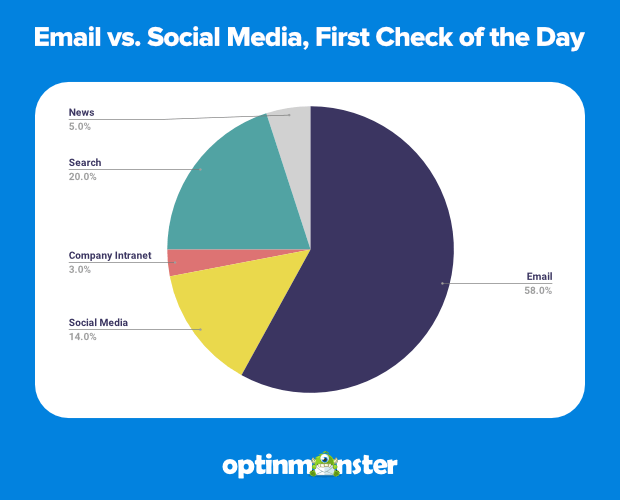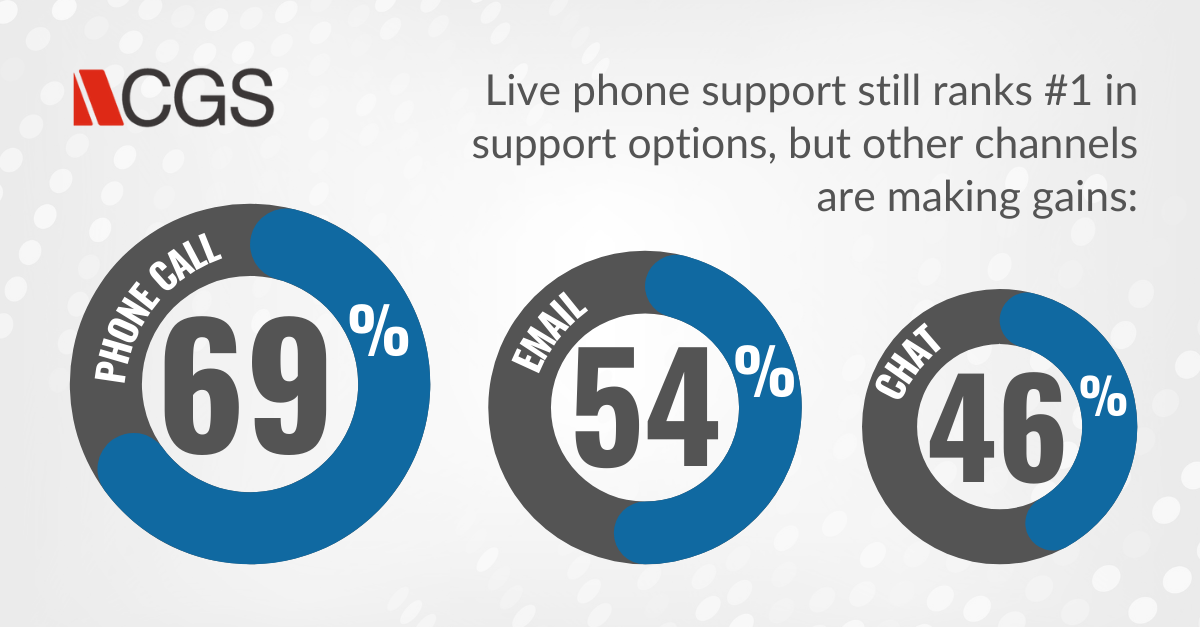The ATV rental industry has seen impressive growth over the last decade. It is projected to reach an evaluation of $697.7 million in 2024, with a compound annual growth rate of 6.8% from 2023 to 2030.

ATV rentals provide an easy option for those who want to traverse remote trails without investing in their vehicle. Rental businesses allow riders access to well-maintained machines suitable for various terrains. Operators can also suggest the most scenic trails that showcase the unique landscape of their location.
This guide will help you learn how to start an ATV rental business. Topics include market research, competitive analysis, registering an EIN, obtaining general liability insurance, forming a legal business entity, and more.
1. Conduct ATV Rental Market Research
Thorough market research is critical when assessing the viability of an ATV rental operation. This helps estimate customer demand in a given region and set competitive pricing. It also helps develop an ATV rental business plan.
Resources like TrailLink.com provide maps of areas with thousands of miles of designated off-roading paths. Cross-reference terrain with visitor numbers and tourism growth forecasts from local chambers of commerce.
Cape Cod has over 100 miles of trails with over 5 million annual tourists. The Appalachian Mountains tally over 3,300 miles of trails across multiple states. High-traffic areas ensure greater visibility and make it easier to attract first-time riders.
Understanding seasonality is key for an ATV business. Warmer months between April and August account for almost 60% of annual ridership based on industry sales reports. Staffing and inventory should correlate with peak seasons.
Competitor analysis provides pricing guidance. A mix of large national chains and smaller regional operators exists. Assess rental rates in your area for different ATV engine sizes and add-on equipment like helmets or GPS devices. Average daily rental costs range from $150-300 depending on the model and extras.
Ongoing customer surveys by incumbents reveal that safety training and guided tours are resonant value-added services. Over 80% of first-time renters opt for basic operating lessons for reassurance and peace of mind before solo trips. This presents cross-selling and upselling opportunities.
2. Analyze the Competition
Carefully evaluating competitors enables new ATV and car rental operators to identify strategic advantages. This involves assessing both local brick-and-mortar rivals as well as larger national chains with an online presence.
Begin by locating all providers in the intended service area via Google Maps searches. Document key details like rental fleet sizes, staff count, years in business, and Google or Yelp ratings and reviews. Then conduct on-site visits recording amenity options, facility condition, and customer service quality.
Compare rental package structures and pricing across the competitor set looking for opportunities to undercut rates or provide greater overall value. For example, some shops bundle protective gear like helmets and boots while others charge extra fees.
Evaluating competitors’ online platforms and social media engagement offers additional insights. Search website traffic estimates from Alexa to gauge relative visibility and interest. Similarly, check competitor Facebook or Instagram follower counts and post engagement metrics.
This analysis reveals target customer demographics based on who engages most actively with incumbent operators online. It also highlights marketing tactics and promotions that resonate best with ATV enthusiasts in the region.
3. Costs to Start an ATV Rental Business
Launching an ATV rental demands significant upfront investment to acquire a fleet and prepare facilities. However, with careful planning, these startup costs can be managed through phased growth and financing options.

Startup Costs
- New sport-utility quads cost $8,000-$12,000 depending on engine size and features.
- Most businesses buy used, well-maintained models for $3,000-$7,000 as a cost savings.
- Building a core fleet of 10-15 ATVs to open requires around $50,000.
- A full set of protective extras per unit runs $300-$500 including helmets, goggles, gloves, and boots. For a 15 ATV fleet that tallies $5,000-$7,500 more.
- Securing rental space is another major startup cost. Leasing an existing warehouse or garage for storing and maintaining the ATV fleet averages $2-$4 per square foot monthly.
- For a 1,500-square-foot shop, that equates to $3,000-$6,000 monthly or $36,000-$72,000 annually.
- Constructing a new space can cost even more at $100-$200 per square foot.
- Basic power tools, battery chargers, tire changers, and other gear runs $5,000-10,000 at startup.
- Building permits, inspections, and contractors for electrical and plumbing work add $2,000-$4,000 in most cases.
- General liability coverage to operate starts at around $1,500 annually for a single location.
- Product liability for rental equipment costs extra at about $3,000 per year.
- Workers compensation for 2-3 staff members tallies another $4,000 annually.
- Local business permits, state sales tax registration, and federal EIN filing contribute nominal startup fees of around $500-1,000.
Traditional bootstrapping an ATV rental business costs around $125,000-$175,000 to open in most regions. You may also need to invest in rental software.
Ongoing Costs
- Staff payroll averaging $15 per hour for 2-3 full-time employees equals $60,000-90,000 annually.
- Loan repayments and interest on startup financing would need budgeting as well, typically $1,500+ monthly.
- Consumables like fuel and parts see costs of $20,000+ per year. You could save some cash by frequenting a gas station that offers loyalty bonuses.
- Lastly, marketing initiatives and continued rental fleet expansion require $10,000+ in annual reinvestment.
Carefully modeled financial projections are key for managing cash flow seasonally when business surges and dips. The high demand for outdoor recreation makes an ATV rental an appealing small business opportunity.
4. Form a Legal Business Entity
When establishing an ATV rental business, properly structuring the legal entity protects the founder’s assets. The right formation also allows for operational flexibility as the company grows. Weighing the pros and cons of different options is critical early on.
Sole Proprietorship
A sole proprietorship provides the easiest route requiring only a minimal business license filing with the county clerk. However, the owner assumes unlimited financial liability for company debts and legal claims. Any ATV accidents on rental property could put personal assets at risk for damages which is concerning.
Partnership
Forming a general partnership reduces liability slightly by distributing it across partners jointly. However personal assets remain vulnerable to business lawsuits or bankruptcy claims. Disputes between partners can also trigger dissolution if operating agreements lack clear exit strategies.
Limited Liability Company (LLC)
A limited liability company (LLC) creates the strongest barrier between business and personal finances. An LLC limits the owner’s liability to their invested capital with less exposure beyond that. Members cannot be held personally responsible for company debts or legal judgment.
Corporation
A corporation provides the highest level of liability protection but comes at a cost. Registering a corporation is a lengthy and complex process. It’s also the most expensive business entity to form. In this way, corporations are best suited to large businesses, rather than a small successful ATV rental business.
5. Register Your Business For Taxes
Properly registering for federal and state tax ID numbers legitimizes a new ATV rental operation. Skipping this step risks significant IRS penalties and payment processing headaches.
An Employer Identification Number (EIN) serves as a unique business identifier for federal tax purposes as an alternative to using a Social Security Number. The EIN allows a rental company to open business bank accounts, apply for financing, hire staff, and pay tax taxes, appropriately.
Sole proprietors can obtain an EIN for free directly from the Internal Revenue Service via this online application. The entire process takes just minutes requiring basic details about ownership structure and operational activity.
Here is the step-by-step process:
- Navigate to the IRS EIN Assistant site
- Select view Additional Types including Sole Proprietorship when asked to describe your business
- Enter the legal name and mailing address for your rental business
- Select owner or partnership as appropriate then provide owner names/addresses
- Identify Tax Year and Principal Business Activity codes which auto-populate
- Specify you are applying for an EIN then submit the form electronically
Once submitted, the EIN should be provided immediately. This gets referenced on all tax documents and other government filings going forward.
Additionally, ATV rental companies must register with their State Department of Revenue for sales tax collection. Most states offer online registration portals with minimal identity verification. This also generates a state tax ID number for reporting and payment submissions. Registration costs $10-$20 in most states.
6. Setup Your Accounting
Proper financial record-keeping lends credibility with lenders, simplifies tax compliance, and spotlights growth opportunities for ATV rental businesses. Yet accounting often intimidates first-time entrepreneurs. The right tools and guidance alleviate frustrations.
Accounting Software
Deploying small business accounting software centralizes invoices, inventory, payroll, and other finance tracking in one integrated portal. Top packages like QuickBooks seamlessly sync with bank accounts and credit cards as well, automatically logging income and expenses.
Hire an Accountant
Outsourcing tax preparation and bookkeeping to financial professionals saves rental operators hours of headaches deciphering fiscal code compliance and reporting. Local accountants and Certified Public Accountants (CPAs) offer these critical services on an hourly or annual contract basis.
Open a Business Bank Account
Separate personal and professional banking to hold yourself accountable, and retain authority as a business. Open a business bank account to monitor incoming and outgoing funds and streamline tax organization.
Apply for a Business Credit Card
Business credit cards also bolster legitimacy for heavy equipment suppliers or maintenance partners unlikely to extend credit to unproven startups. Banks determine approval and credit limits for so-called “commercial cards” based on both personal and business credit scores.
7. Obtain Licenses and Permits
Before welcoming first customers, ATV rental entrepreneurs must ensure full legal compliance through required licenses and permits. Find federal license information through the U.S. Small Business Administration. The SBA also offers a local search tool for state and city requirements.
Start by registering the business within its home county/city and paying any associated municipal business privilege taxes. These certifications confirm adherence to zoning commercial activity statutes for the intended property.
Research any state or county licenses particular to recreational vehicle rental businesses as well. For instance, some jurisdictions mandate permits for any vendor renting out vehicles that require a driver’s license like ATVs. These certificates run $25-$100 annually.
Safety precautions also dictate abiding by state motor vehicle departments regarding title transfers and registrations for each ATV. Although customers operate rented quad bikes, rental companies still qualify as legal owners responsible for registering fleet vehicles locally. Standard fees and emissions testing apply just like a personal ATV.
Do not overlook registering rental properties for fire code protections too. National Fire Protection Association (NFPA) standards require commercial garages with service bays housing ATVs and flammable chemicals to install suppression systems, ventilation, specialized electrical wiring, and containment accommodations.
Employee considerations trigger additional permits around minimum wage, unemployment insurance, posters, and workers’ compensation even for a very small staff. U.S. Department of Labor mandates outline employer obligations regardless of organization size.
While somewhat cumbersome, satisfying every licensing and permitting demand at all government levels protects rental entrepreneurs from undeserved sanctions. It also prepares businesses to unlock growth opportunities excluded from operations still stuck flying under the radar.
8. Get Business Insurance
Insuring an ATV rental business safeguards against financial ruin when inevitable equipment breakdowns, accidents, or natural disasters strike. Without policies covering lost income, legal liability, and property damage, entire livelihoods get wiped out rapidly.
Consider if a rented ATV catches fire and explosions destroy your entire fleet garage. The costs to rebuild and replace 10 machines could approach $100,000 without insurance. Or if a first-time customer gets into a rollover crash resulting in a $250,000 lawsuit against your company.
Legal judgments drain savings quickly when uninsured. Severe storms also pose risks like hail storms that could dent ATV bodies prompting repairs exceeding $20,000.
Getting insured prevents these common incidents from shuttering operations. Comprehensive policies save entrepreneurs thousands on repairs. Just as critically, they facilitate staying open for business throughout claims processes.
Standard coverage types to secure include:
- General Liability – Protects against bodily injury, property damage, and legal judgments from lawsuits
- Commercial Property – Repairs/replaces fleet vehicles, shop/garage, tools/parts
- Inland Marine – Insurers rented equipment when away from premises
- Business Income – Covers income lost stemming from property damage
Use online insurance marketplaces like CoverWallet to request quotes from multiple providers at once. Answer a short questionnaire and get 10+ tailored rate options within minutes. Compare limits of coverage, deductibles, and premium rates across top insurers conveniently.
Understand that higher policy limits and lower deductibles raise prices but reduce personal liability. Factor protection costs into operating budgets and adjusts to fit business growth stages.
9. Create an Office Space
Renting and maintaining a large equipment fleet demands more operational space than home garages allow. An ATV rental works best with a dedicated commercial facility providing visibility plus accommodations for inventory, maintenance, and customer interactions.
Retail Office
Inexpensive short-term leases on spaces like old automotive shops near popular riding trails keep build-out costs minimal. Expect $2-4 per square foot in rent based on location and condition. A basic 1,500-square-foot shop costs around $3,000-$6,000 monthly.
Coworking Office
The flexibility of coworking spaces facilitates launching on a small scale too. National chains like WeWork offer convenient month-to-month memberships for both desk space and common meeting areas useful when hiring staff or contracting tour guides.
Home Office
Operating mobile-only without a home-based retail space prevents forming community connections that breed customer loyalty. Remote storage lockers may save rental owners money initially but the damaged perception and hassle outweigh minor overhead savings for most.
10. Source Your Equipment
Successfully launching an ATV rental relies on securing an initial fleet of bikes at reasonable prices. Balancing performance, safety, and acquisition costs takes thorough prospecting across new retailers, used marketplaces, and financing partners.
Buy New
Buying new through power sports dealers like Honda, Yamaha, and Polaris averages $6,000-$12,000 per unit but comes with factory warranties. Consider last year’s unsold inventory for 20-25% discounts. Building rapport with dealers facilitates additional savings on bundled purchases too.
Buy Used
Acquiring good-conditioned used models with under 5,000 miles becomes feasible a few years after initial production. Facebook Marketplace, Craigslist, and auction houses like Crashed Toys Powersports Auctions provide private party and dealer resale inventory often priced 40-60% below new sticker prices.
Rent
Thoroughly inspect each purchase checking hour meters, tires, mechanical issues, and crash damage. Consider adding aftermarket remote kill switches to used quads allowing guides to disable rentals remotely for discipline issues. Used buys present the best value for patient entrepreneurs.
Lease
Financing through specialty lenders like Sheffield Financial helps manage lumpsum ATV investments as well. Loans funding rough terrain vehicle fleets require at least 20% down payments with attractive 60-72 month terms and buyout options. This allows for opening on a smaller budget and scaling the fleet gradually according to demand.
11. Establish Your Brand Assets
Cultivating a distinct brand identity earns customer trust and exudes professionalism for fledgling ATV rental companies. Memorable logos, signage, websites, and other assets boost visibility while emphasizing competence.
Get a Business Phone Number
Acquiring a unique toll-free phone number adds legitimacy for patrons calling to book rides. Services like RingCentral provide vanity business numbers with custom-recorded greetings for under $30 monthly. Call analytics even quantify marketing campaign performance.
Design a Logo
A logo that evokes outdoor adventure makes a strong first impression on local trails. Looka’s artificial intelligence logo maker combines icons like mountains, gears, or trails with business names to instantly generate hundreds of on-brand visual concepts perfect for beginners. Prices start around $20 for high-resolution vector files easy to print on shop signage.
Print Business Cards
Vistaprint provides affordable, custom-designed signs, business cards, flyers, and apparel allowing consistent branding across all guest and employee touchpoints. Order 500 basic cards for $20 featuring the company logo, motto, phone number, site, and social media handles.
Buy a Domain Name
Secure the perfect .com domain during Vistaprint checkout before impersonators steal web visibility. Platforms like Namecheap facilitate finding available URL variations of business names starting under $10 annually.
Design a Website
Then investing in a professional website that enables direct bookings proves crucial for convenience and leading search rankings. Use website builders like Wix for quick DIY sites or hire freelancers on Fiverr to construct custom WordPress-powered pages for $100.
12. Join Associations and Groups
Forging connections with regional power sports associations, peer groups, and enthusiasts builds credibility for upstart ATV rental owners. These networking channels provide marketing exposure, industry expertise, power, and customer referrals as operations scale up.
Local Associations
Joining local chapters of the American Motorcyclist Association (AMA) or statewide Recreational Off-Highway Vehicle Association organizations opens access to existing er sports communities. Benefits range from legislative lobbying to group insurance plans and visibility for new rental offerings across member communications.
Local Meetups
Attending regional power sports trade events allows for valuable in-person networking as well. Exhibiting rent gear here ensures directly engaging the target demographic. Use Meetup to find 100 motorsport expos nationwide.
Facebook Groups
For online community support, Facebook delivers through hyperlocal social groups intrinsically invested in regional trail systems and culture. Join relevant clubs like the ATV Riders and ATVs for sale or trade which share local riding conditions, organize group events, and recommend preferred shops.
13. How to Market an ATV Rental Business
Spreading awareness as an unknown adventure startup takes creativity when competing against established national chains. This makes marketing a daily priority from opening day forward. Thankfully many affordable channels help drive local discovery.

Referral Marketing
Satisfied customers provide the most valuable and credible referrals at first. Offering kickbacks for word-of-mouth referrals motivates happy riders to endorse businesses across their networks. Provide 10-20% discounts on future rentals for each new group that books while crediting the referrer to incentivize viral buzz.
Digital Marketing
Digital channels then facilitate efficiently staying top of mind for motivated outdoor explorers sourcing local options online. Consider:
Optimizing Google Business Profile
- Upload engaging photos of rentals and trail terrain
- Spotlight unique bikes and safety certifications
Initiating email/text nurturing campaigns
- Highlight seasonal trail conditions and features in monthly updates
- Promote last-minute rental deals/availability
Trying paid Facebook and Instagram ads
- Target users interested in outdoor activities by geo/age
- Retarget past visitors optimized around on-site behaviors
Launching Google Ads campaigns
- Bid on demand-capturing terms like “atv rental Ohio”
- Spotlight large fleet sizes and age requirements
Posting video guides on YouTube
- Showcase must-see regional trails and terrain
- Provide safety/operational tutorials for beginners
Traditional Marketing
Traditional options like billboards, radio, and print ads in locally popular outdoor magazines help capture seasonal visitors as well. Just beware of much higher costs for limited exposure and unclear ROI unless placed strategically near premier riding spots. Think commuter routes passing by entrances to top area trail systems.
Casting a wide net across digital platforms first maximizes visibility most economically at launch. As customer volumes grow and operational capacity expands, consider doubling down on the most fruitful channels with further investment.
14. Focus on the Customer
Providing exceptional customer service creates loyal brand advocates that fuel referrals for ATV rental businesses. In an industry where reputation spreads rapidly through word-of-mouth, prioritizing every patron’s experience reaps immense rewards.

Consider a family renting multiple ATVs for a reunion looking to explore scenic trails. They likely have little riding experience so appreciate patient guidance on operating gear and trail recommendations catered to beginners. The kids beg to ride too but may fall under age limits without parental supervision.
Accommodating special requests within safety allowances makes customers feel genuinely cared for as individuals. The family refers 10 friends who book future rides after hearing rave reviews of the thoughtful staff.
Another scenario might involve experienced riders requesting steeper hill climb routes. An operator could provide customized trail maps highlighting the most challenging inclines in the region to match skill levels. Riders feel heard and return consistently while telling riding groups about the exceptional service.
Delighting every customer through tailored offerings and priority support breeds positive word-of-mouth marketing. Experiential companies like ATV rentals live or die by their communities’ sentiments. New visitors sample services based first on friends’ endorsements.
